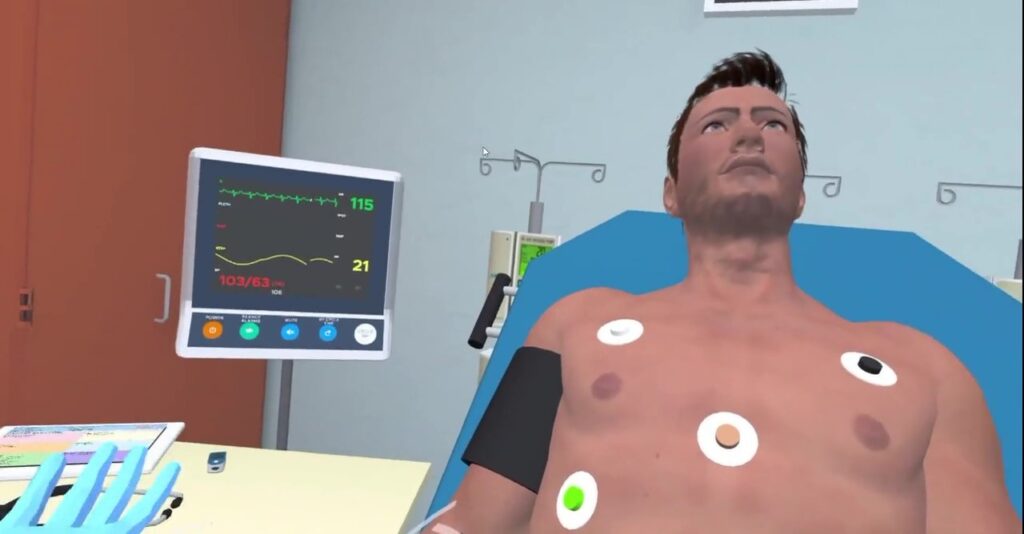Virtual reality in simulation is rapidly becoming standard use within, science based education and medical training. Reflective of the use of VR becoming more established as an educational and training tool, new articles reviewing VR in simulation, have been recently published in numerous scientific journals.
The simulation created by the virtual technology software can work on immersive and interactive systems to enable training to be delivered in the most advantageous method. It can be experienced.
What are Immersive Systems?
Immersive systems such as Oculus Rift and HTC Vive, use VR360 degree videos to create immersive VR experiences. Dedicated software works with a headset to overlay a virtual environment that the user can see and move around in. Enter the term spatial computing.
A more economical version for viewing VR360 degree imagery is with a smart phone and a cardboard Head Mounted Display (HMD). Viewing times are reduced with the cardboard HMD to prevent motion sickness. The VR360 technology enables the participant to use VR in simulation, to have a panoramic view, in the virtual environment, however without interaction, practical/technical training is not as effective. For health based providers this format of VR is not recommended.
What are Interactive Systems?
Interactive Systems enables virtual labs to be created on any laptop or computer with a powerful graphics processing unit (GPU). Game-like interaction is still limited to theoretical learning due to the absence of haptic simulation.
What are Haptic Systems?
Haptic technology or 3D touch can create a tactile sensation, utilizing pressure, vibrations, or physical movements using a technology referred to as box simulators or benchtop simulators.
Haptic interfaces incorporate virtual reality to accurately simulate surgical and technical procedures. Simulations of surgical procedures allow for more than theoretical knowledge; students can learn how much pressure to apply and improve their motor skills by performing repetitive tasks.
What are Augmented Systems?
Augmented systems combine computed tomographic images and the real environment. This enables supplemental information displayed in AR technologies to display additional information. During surgery, the addition of visual information can improve accuracy during robotic or telesurgery when there is a lack of haptic sensations.
Psycho Motor Skills and Simulation
Simulators speed up the development of psycho motor skills, significantly improving conscious, cognitive processing of perception, memory, and retainment on knowledge. VR and simulation are becoming recognized as the most effective use of technology, to support the advancement of therapies and surgical procedures ‘where patients’ life might be in danger such as emergency situations’.
https://www.ncbi.nlm.nih.gov/pmc/articles/PMC6177729/
VR in Simulation and Patient Safety
VR simulation can give the user the ability to analyze their actions when faced with a challenging situation or complex task. Although VR technology is not revolutionary HMDs are lighter and transportable, meaning even your smartphone can produce a virtual reality, simulation. This has opened up new ways to deliver surgical clinical training outside of the hospital.
Recently companies have built clinical scenarios of COVID to allow safe but effective patient troubleshooting within VR for effective tools to learn and development clinical skills and knowledge.
Advantages of VR in Simulation
- Provides a quantitative appraisal, based on an unbiased assessment of performance, also referred to as a learning curve
- Repetition of complex tasks in a stress free environment improves complex skills surgeons need without the risk
- Accelerates learning and manual skills, reducing the risk of errors during surgery
Future of VR in Simulation
Simulation is becoming an accepted part of healthcare education and training, application of new therapies, and the setting up of complex medical equipment. VR in Simulation is now seen as an essential tool to ensure medical professionals enter the workforce with a high level of competence and range of abilities.
